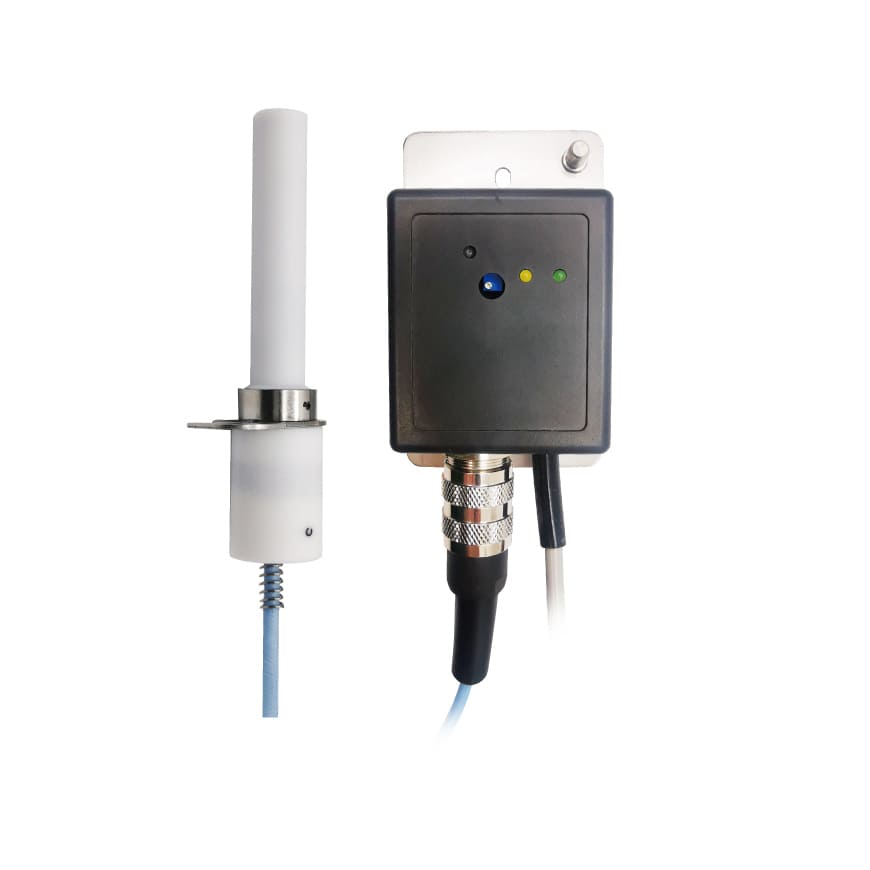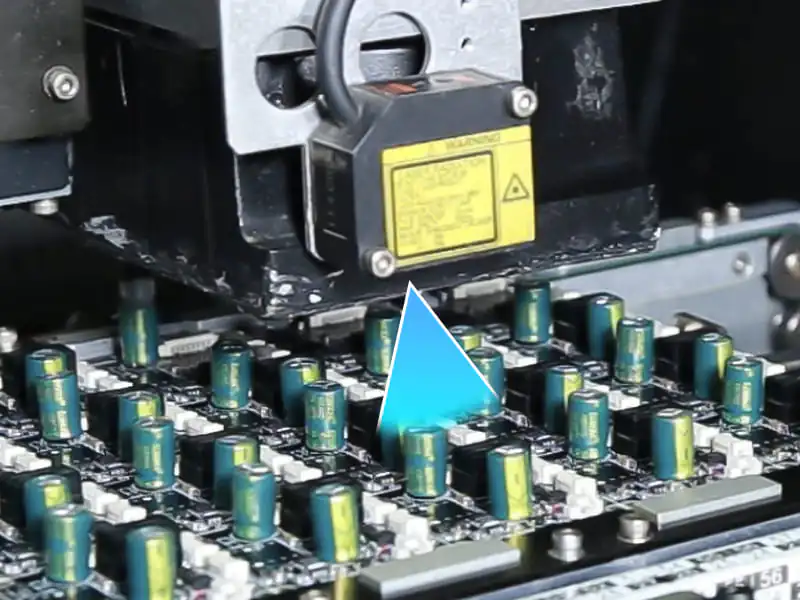An Easy Guide to Understanding What is a Capacitive Proximity Sensor Switch

A capacitive proximity sensor switch is a type of sensor that detects the presence or absence of an object based on changes in capacitance. These sensors are widely used in industrial automation and other systems where non-contact detection of materials is required. Unlike traditional mechanical switches, capacitive proximity sensors offer several benefits, including higher durability, faster response times, and the ability to detect a wide range of materials, including metals, plastics, liquids, and even granular substances.
What is a Capacitive Proximity Sensor Switch?
A capacitive proximity sensor switch is an electronic device that detects changes in capacitance when an object approaches or moves away from the sensor’s detection zone. This change in capacitance is caused by the variation in the dielectric constant of the material that is in proximity to the sensor. These sensors are often used in environments where non-contact detection is necessary, and they can detect both conductive and non-conductive materials.
Capacitive proximity sensors are a type of non-contact sensor switch that operate by generating an electrostatic field between the sensor’s electrodes. When a target object, such as a metal or liquid, enters the field, it alters the electrostatic field, changing the capacitance. This change is detected by the sensor’s circuitry, which then outputs an electrical signal that can be used to trigger various actions, such as activating a switch or signaling the presence of the object.
Working Principle of a Capacitive Proximity Sensor Switch
The capacitive sensor switch can detect the presence of the target even if it is not in direct contact with the sensor, making it an ideal solution for systems where physical contact may not be feasible or desirable. The change in capacitance can be extremely small but still detectable by the sensor’s circuitry, allowing for precise and reliable measurements.
Advantages of Capacitive Proximity Sensor Switches
Capacitive proximity sensor switches offer numerous advantages over other types of sensors, making them a popular choice in a wide range of applications.
Non-contact Detection: One of the primary benefits of capacitive proximity sensors is their ability to detect objects without making physical contact. This feature reduces wear and tear, increases sensor longevity, and minimizes the need for maintenance.
High Sensitivity: Capacitive sensors are highly sensitive to small changes in capacitance, allowing them to detect a variety of materials, including metals, liquids, plastics, and even granular substances. This versatility makes them ideal for many different applications, from industrial automation to food packaging.
Temperature Stability: Capacitive proximity sensors are known for their stable performance across a wide range of temperatures. Their capacitance value is largely independent of the material of the electrodes, which ensures consistent operation even in harsh environmental conditions.
Simple Structure and Adaptability: The basic design of a capacitive proximity sensor is relatively simple, which makes it easier to manufacture and more cost-effective. Moreover, capacitive sensors can adapt to a variety of materials, including conductors and semiconductors, and can function in extreme environments such as high-pressure or high-temperature conditions.
Good Dynamic Response: Capacitive proximity sensors have a fast response time due to the lightweight nature of their movable parts. The small electrostatic attraction between the electrodes allows for rapid switching, which is especially useful in dynamic applications such as automated production lines.
Wide Detection Range: These sensors can detect objects at varying distances, depending on the size of the sensor and the material being detected. Capacitive proximity sensors can also be calibrated for use in detecting objects in different environments, whether that be measuring liquid levels, detecting foreign objects, or monitoring the presence of parts on a production line.
Disadvantages of Capacitive Proximity Sensor Switches
While capacitive proximity sensors offer numerous benefits, they also come with some limitations:
- High Output Impedance: Capacitive sensors typically have a high output impedance, which can make them more susceptible to external interference. In some cases, this can lead to instability or malfunction. Shielding and proper insulation are necessary to prevent issues related to this high impedance.
- Small Capacitance and Parasitic Capacitance: The capacitance of capacitive sensors is often very small, which makes them sensitive to parasitic capacitance. This can reduce the sensor’s sensitivity and accuracy. The sensor’s performance can also be affected by the lead capacitance, which is the capacitance between the sensor and the connected cables.
- Limited Load Capacity: The small capacitance of capacitive proximity sensors limits their ability to drive large loads directly. Additional circuitry may be needed to buffer the signal and drive larger systems.
- Environmental Sensitivity: Capacitive sensors can be affected by environmental factors such as humidity and temperature, which can alter the dielectric constant of the surrounding air. Special care must be taken when using these sensors in environments with fluctuating conditions.
Applications of Capacitive Proximity Sensor Switches
Capacitive proximity sensors are used in a wide variety of applications across many industries. Their ability to detect both conductive and non-conductive materials makes them suitable for use in diverse environments.
- Industrial Automation: In industrial settings, capacitive proximity sensors are widely used in automated production lines for detecting the presence of objects, measuring distance, and monitoring the position of machine parts. For instance, capacitive sensors can be used to detect the position of metal or plastic parts, ensuring that they are correctly placed for assembly.
- Liquid Level Detection: Capacitive sensors are commonly used for liquid level sensing in industries such as chemicals, pharmaceuticals, and food processing. By detecting changes in capacitance as the liquid level rises or falls, capacitive proximity sensors can provide real-time monitoring of fluid levels in tanks, pipes, and containers.
- Robotics: Capacitive sensors are increasingly being used in robotics for proximity sensing. They help robots detect objects or obstacles in their path, preventing collisions and allowing robots to interact more safely and efficiently with their environment.
- Food and Beverage Industry: In food and beverage production, capacitive proximity sensors can be used to detect the presence of metal or plastic contaminants in packaged goods, ensuring product quality and safety. They are also used in systems for detecting the fill levels of liquids in bottles and cans.
- Security Systems: Capacitive proximity sensors are also utilized in security systems for detecting intruders. For example, these sensors can be installed in doors and windows to detect when someone is approaching, triggering an alarm or alerting security personnel.
- Electronics and Semiconductor Industry: In the manufacturing of electronic components, capacitive proximity sensors are used for position detection and quality control. These sensors can detect the presence of tiny metal or plastic parts that are crucial in the assembly of electronic devices.
- Packaging and Manufacturing: Capacitive proximity sensors are also employed in packaging lines to ensure that containers are correctly filled, sealed, and labeled. They can detect the position of items on a conveyor belt, helping to automate sorting, packaging, and labeling processes.
Capacitive proximity sensor switches are versatile, reliable, and highly sensitive devices that play a crucial role in various industrial applications. Their ability to detect a wide range of materials, from metals and plastics to liquids and granular substances, makes them an invaluable tool in automation, security, and manufacturing processes. Despite some limitations, such as high output impedance and sensitivity to environmental factors, capacitive proximity sensors continue to offer significant advantages in precision, dynamic response, and ease of use.
When selecting a capacitive proximity sensor switch, it is important to consider the specific requirements of the application, including the materials being detected, the environmental conditions, and the sensor’s sensitivity and range. With the right configuration, capacitive proximity sensors can greatly enhance the performance and efficiency of many industrial systems.
Explore Bedook: Your Trusted Sensor Manufacturer
At Bedook, we specialize in designing, developing, and manufacturing a comprehensive range of proximity sensors and switches. Our extensive product lineup includes:
- Inductive Proximity Sensors
- Capacitive Proximity Sensors
- Photoelectric Sensors
- Ultrasonic Sensors
- Solid State Relays
- Various Accessories
With over 10,000 detailed product variations and a robust R&D team, we take pride in our ability to meet your unique requirements with tailored solutions and reliable performance.
Whether you’re seeking off-the-shelf products or customized designs, Bedook offers the expertise and production capacity to ensure your satisfaction.
Get in Touch Today!
We value your interest in our products and warmly encourage you to send us an inquiry. Let us help you find the perfect sensor solution for your application.
Thank you for considering Bedook—your trusted partner in innovation and quality manufacturing. We look forward to collaborating with you!






